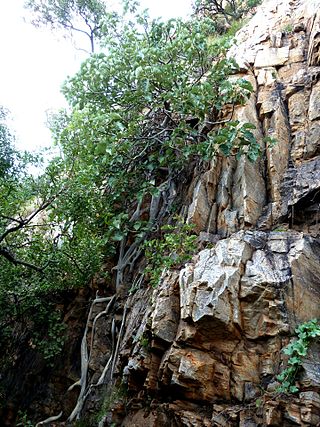Top Qs
Timeline
Chat
Perspective
Ficus abutilifolia
African fig species known as the large-leaved rock fig From Wikipedia, the free encyclopedia
Remove ads
Ficus abutilifolia, the large-leaved rock fig,[1] is a species of African rock-splitting[3] fig that occurs in two disjunct regions, one population north, and another south of the equator. The two populations are pollinated by different fig wasps, and are morphologically distinct.[4] It is named for the similarity of its broadly ovate leaves to that of Abutilon.[3] It is virtually restricted to cliff faces and rock outcrops, and is easily recognized from its large, glabrous leaves and smooth, pale bark.
Remove ads
Species associations
Nigeriella fusciceps Wiebes is the pollinating wasp for the northern population, and Elisabethiella comptoni Wiebes pollinates the southern population.[3][4] Philocaenus rotundus is an associated but non-pollinating wasp.[4]
Gallery
- Foliage of a southern specimen
- Foliage of a northern specimen
- Fig arrangement
- Bark texture
- Roots on granite, Kruger National Park
- Branches and roots, Magaliesberg
References
External links
Wikiwand - on
Seamless Wikipedia browsing. On steroids.
Remove ads








